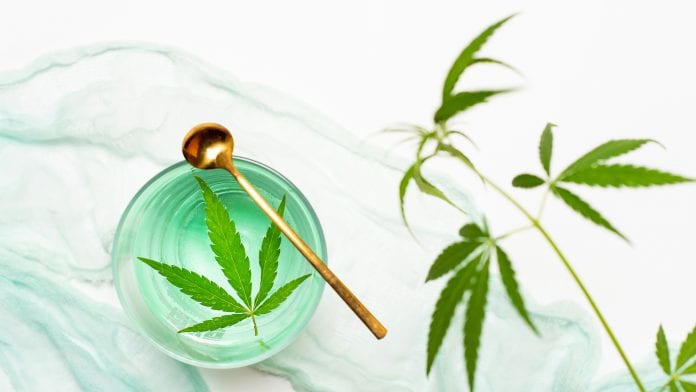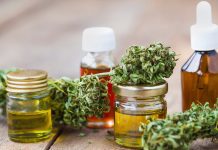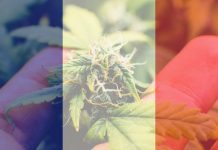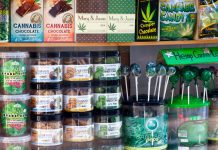
Lorenza Romanese, Managing Director of the European Industrial Hemp Association, speaks with HEQ about the benefits of hemp and its derivatives and the need for further policy change.
In early February, the European Commission announced that it had added CBD, which is naturally derived from the hemp plant to CosIng (cosmetic ingredients), to its list of approved cosmetic ingredients. This was the latest step in a series of international moves indicating growing acceptance of the drug, following a ruling by the European Court of Justice in November that CBD is ‘not a narcotic’ and a December vote by the United Nations to remove cannabis from its Schedule 1 list of dangerous drugs.
Lorenza Romanese, Managing Director of the European Industrial Hemp Association, speaks with HEQ about the benefits of hemp and its derivatives and the need for further policy change.
What are the implications for the hemp industry of the European Commission adding CBD to its Cosing database of cosmetic ingredients?
In practical terms, this means that pure, naturally-derived CBD and extracts from leaves containing CBD have been secured and can be now marketed in the EU as cosmetic products. Operators in the cosmetics industry working with hemp extracts can legally use and label their products containing CBD extracts. Although the Cosing catalogue is not legally binding, it gives guidelines to Member States on how to label and market their cosmetic products in the EU.
What are the agricultural and sustainability benefits of hemp?
From capturing CO2 to regenerating soil and enhancing biodiversity, hemp farming offers multiple environmental benefits that mitigate the effects of climate change and restore healthy ecosystems. In a nutshell, the key benefits of hemp are as follows:
Cleaning the air
If hemp were used as an alternative to carbon-based raw materials, it would allow us to capture and store a substantial amount of CO2. Through photosynthesis, hemp plants have the ability to store considerable amounts of carbon in both the stems and the roots. In fact, one tonne of hemp can absorb up to 1.6 tonnes of CO2.
Regenerating and improving the quality of soil
As a fast-growing crop with a high leaf turnover rate, hemp can, if grown in ideal conditions, fully cover the ground within three weeks post-germination. The dense leaves rapidly form a natural soil cover material that reduces water loss and soil erosion. In addition, fallen leaves provide vital nutrition for the soil. Moreover, because of its height and shading capacity, hemp efficiently eliminates weeds, leaving the soil in optimum condition.
Hemp can also be used with great efficiency in land reclamation. In fact, it is considered to be an optimal pioneer crop, notably because of its phytoremediation capacity, meaning that it is able to extract heavy metals from the ground.
To sum up, hemp has very positive effects on soil health because it stabilises erosion, adds nutrients to the soil, naturally removes heavy metals, and increases the yield of subsequent crops.
Enhancing biodiversity
Hemp produces pollen for bees and other pollinators in a period of floral scarcity, and nutritious seeds for wild birds.
The flowering cycle usually occurs between July and September, coinciding with a lack of pollen production by other farm crops. Being a wind-pollinated, dioecious and staminate plant, hemp produces large amounts of pollen, a vital nutritional source for bees during periods of floral scarcity.
Promoting sustainable farming
Hemp farming requires very low or no input. Due to a lack of natural predator insects, insecticides can be avoided as hemp is susceptible to few serious pests and is usually cultivated with either very little need for chemical treatments, such as herbicides, or without the application of herbicides entirely.
Moreover, its processing generates zero waste: all parts of hemp, from the roots to the flowers, can be used or further transformed. That is why the real added value of industrial hemp is its ability to produce different products – food, feed, cosmetics, biomaterials, energy – while achieving positive environmental externalities with one rotational crop.
Saving water
Studies have shown that hemp is more ecologically neutral than other fibres, particularly in terms of water usage. As an example, cotton requires 9,758kg of water per kg to produce, while hemp needs between 2,401kg and 3,401kg of water per kg. This represents a 75% water saving.
Reducing deforestation
Hemp is a good and sustainable source of cellulose for paper-making, which could help to reduce deforestation. Mature hemp stalks are rich in cellulose: they contain around 65% to 70% cellulose (wood contains around 40%, flax 65% to 75% and cotton up to 90%), and they only take five months to mature. This high-cellulose content, coupled with the fast growth of hemp stalks – only a few months, compared to years for forest wood – in an industrial setting typically yields a pulp production up to four times that of a mature tree plantation, on a hectare basis. Furthermore, hemp paper can be recycled up to seven or eight times, compared with only three to five times for wood pulp paper.
How could EU policy evolve in order to better support hemp producers and consumers? Is it time for a more standardised approach to regulation?
First of all – and taking into consideration the recent ruling of the European Court of Justice (ECJ) on the Kanavape case, which clearly determined that CBD is not a drug – it is paramount to establish a clear legal framework for the marketing and trading of CBD products in Europe. Hemp operators and hemp farmers deserve legal certainty as is the case for any other sector in EU. Our operators deserve a harmonisation at EU level that will allow them to safely produce and sell their products, while ensuring the highest safety standards for consumers. As a matter of fact, CBD extracted from the entirety of the Cannabis sativa plant should not be considered as a drug within the meaning of the Single Convention but rather as a food or food supplement, depending on the dose. Most similar botanicals can be sold as traditional food in cases where the concentration is low, as a food supplement or as a medicine. Hemp should not be the exception.
What is more, the contribution to the environment of the hemp plant should be recognised and the use of hemp for carbon farming encouraged. For instance, the EU Legislator should envisage a simplification of the new greening measures (GAEC) for hemp growers, such as by excluding hemp from the obligation of having non-productive areas. Moreover, hemp farmers should receive compensation for the positive environmental externalities, possibly within the existing or a new emissions trading scheme.
In line with this, farmers and operators should be allowed to harvest and produce from all parts of the hemp plant – including flowers and leaves – and market any kind of product, while maintaining compliance with the THC content limits.
Has the COVID-19 pandemic had a significant impact on the European hemp industry?
In Europe, the COVID-19 pandemic has certainly affected hemp-related businesses (as has been the case with other sectors as well). In spite of this, we have seen an increase in the number of memberships, which shows that in spite of the economic difficulties facing them, our members strongly value being part of a network that aims to secure the European hemp market and establishing a fair and adequate legal framework for the production and trading of hemp and its derived products.
Are there any key developments or challenges facing the European hemp industry which you think our readers should know about?
At the moment, the major challenge within the European hemp sector is related to the status of hemp extracts in Europe and their classification as Novel Foods. In order to sell hemp extracts in the EU, hemp operators need to go through a Novel Foods application to be submitted to the European Food Safety Authority (EFSA), as well as the UK Food Safety Authority (FSA) for operators who want to operate in the UK. Due to the fact that Novel Foods applications can be extremely expensive, EIHA decided in June 2019 to start a Novel Food Consortium with its members to submit a joint Novel Foods application to both authorities.
The EIHA Novel Food Consortium aims to finally regulate the CBD market in Europe for the industry and for consumers. According to the terms of the EU Regulation on Novel Foods, a ‘Novel Food’ is defined as ‘any food that was not used for human consumption to a significant degree within the Union before 15 May 1997’. If a food is considered Novel, it must be authorised by the European Commission and undergo a pre-market safety assessment by EFSA before it can be legally marketed in the EU. As I said, this is an expensive and time-consuming process that would harm most hemp producers.
EIHA has invested around €3.5m in this project to finance relevant and original toxicological studies on CBD and THC. By covering all the possible range of toxicological studies for both CBD and THC molecules, this project represents the most comprehensive response that we can deliver to the authorities. It is science-based, and it is the only way in which we can address the unfair status quo. We cannot guarantee the success of the application, but what we can ensure is that we will put all of our efforts into this project, which we believe will change history.
If you want to read more about Novel Foods and the Consortium, please go to https://eiha.org/eiha-novel-food-consortium/
Lorenza Romanese
Managing Director
European Industrial Hemp Association
https://eiha.org/
This article is from issue 17 of Health Europa. Click here to get your free subscription today.









